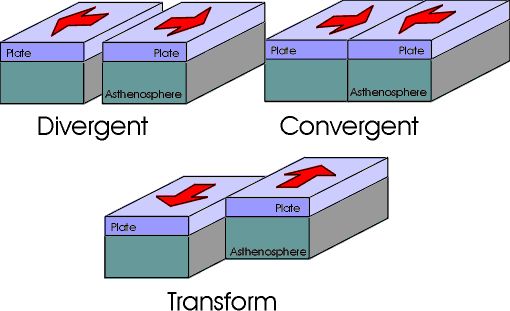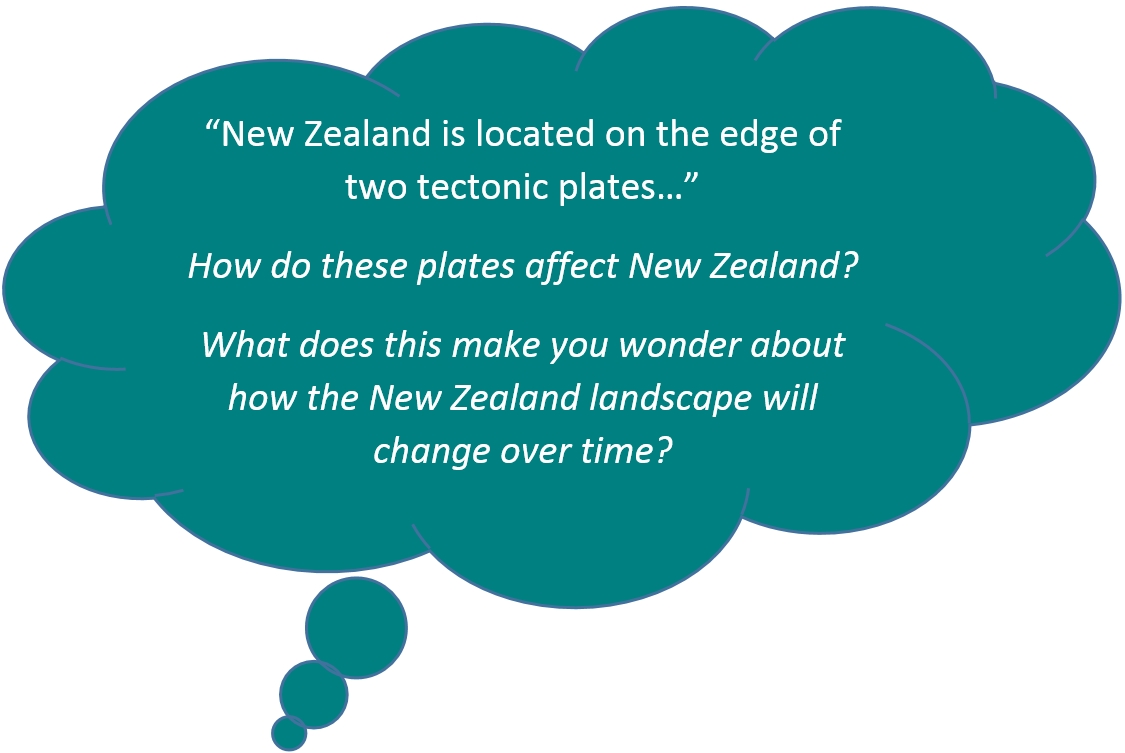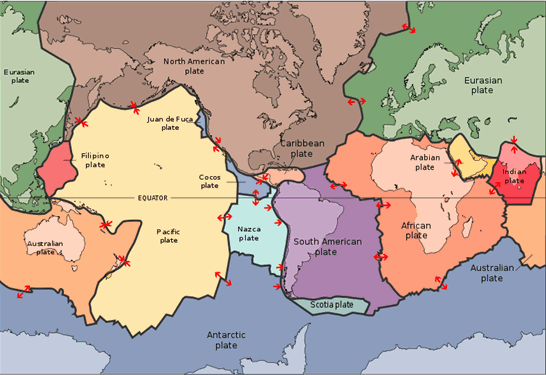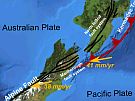Plate tectonics
Plate tectonics is a theory which explains how the Earth's surface is broken into large plates which move. 250 million years ago the Earth’s continents were joined together in one giant landmass called Pangaea. Slowly, over millions of years, Pangaea broke in two and drifted apart forming the smaller continents of today.
Plate tectonics explains how similar animals and plants live in countries which are now a long way from each other, and how mountain ranges in different continents were once joined.
On the Earth today there are seven large plates and many smaller ones. The plates move in slow motion and are always changing shape. It is thought that heat inside the Earth creates convection currents and provides the energy to move the plates from a few millimetres up to about 15cm per year.
Plate boundaries
At the edge of the tectonic plates one of three things can happen:

Types of Plate Boundary. Image: GNS Science.
Spreading boundary (divergent)
A spreading boundary is where two plates move away from each other. The plates move apart so magma, or molten rock, can rise from inside the Earth to fill in the gap. This can form rift valleys on land or ocean ridges on the seafloor (for example the Atlantic Ocean).
Colliding boundary (convergent)
This is where two plates push together. Different things will happen depending on what type of plates are colliding:
If the plates are continental plates they are the same weight so the plates cannot over-ride each other and the land buckles and folds, creating mountain ranges.
If the plates are both oceanic plates then island arcs or basins can form.
If an oceanic plate collides with a continental plate the heavier oceanic plate will sink (subduct) under the continental plate, this can lead to volcanic activity.
Sliding boundary (transform)
This is when two plates slide against each other, but rather than sliding smoothly, the plates can get stuck and build up stress. This stress is then released as a burst of movement and is felt as an earthquake.
Plate tectonics in New Zealand
New Zealand sits on the edge of two tectonic plates, the Indo-Australian and the Pacific plates. This makes New Zealand geologically active with many earthquakes, geothermal areas and volcanoes.
The movement of these two tectonic plates shapes the New Zealand landscape that we know and love.
Watch the GNS Science animation (519k), showing the future shape of New Zealand if the current movement continues.









